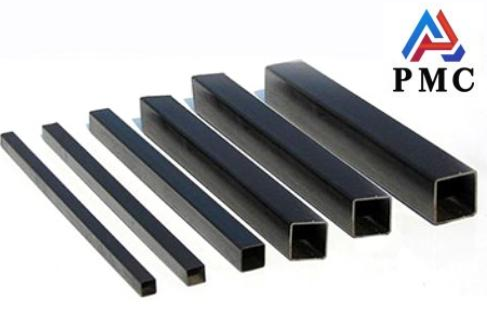
Rectangular Tube Sizes
Rectangular tubes are widely used in construction, structural engineering, automotive manufacturing, and general fabrication due to their high strength, versatile shape, and efficient load-bearing capacity. Understanding rectangular tube sizes is essential for selecting the right product for your application, ensuring performance, safety, and cost-effectiveness.
What is a rectangular tube?
A rectangular tube is a versatile hollow structural section (HSS) typically made from steel, stainless steel, or aluminum. Characterized by its flat-sided rectangular cross-section with precise height and width, it offers excellent structural integrity and resistance to bending. Available in a broad range of sizes and wall thicknesses, rectangular tubing is widely used across industries—from lightweight frameworks and furniture to heavy-duty construction, machinery, and load-bearing applications.

Advantages of rectangular tubes
1. Excellent mechanical properties: large section inertia moment and bending section coefficient, strong resistance to bending and torsion, and higher load-bearing capacity than solid profiles at the same weight.
2. High material utilization rate: The hollow structure reduces material consumption, reduces overall weight and reduces costs, meeting lightweight design requirements.
3. Strong structural adaptability: The rectangular cross-section is easy to splice with other rectangular/square components, with high connection stability, suitable for building frames, brackets and other structures.
4. Good processing convenience: the surface is flat, easy for subsequent processing such as welding, drilling, cutting and painting, and can adapt to the customized needs of complex working conditions.
5. Efficient space utilization: The rectangular cross-section fits the plane layout, which can save space and improve the compactness of the structure in scenarios such as equipment installation and building decoration.
6. Wide range of application scenarios: Performance can be adjusted according to size, wall thickness and material to meet the load-bearing or protection needs of multiple fields such as construction, machinery, automobiles, furniture, etc.
7. Multiple anti-corrosion options: supports hot-dip galvanizing, painting, plating and other anti-corrosion treatments, and can maintain good durability in humid, outdoor and other corrosive environments.
Common rectangular tube sizes
Rectangular tubing comes in various standard sizes, typically measured in millimeters or inches. Common dimensions include:
Width x Height: 20x40 mm, 50x100 mm, 75x150 mm, etc.
Wall Thickness: Ranges from 1.0 mm to 20 mm or more.
Length: Usually supplied in 6-meter (20-foot) standard lengths, with custom lengths available upon request.
A typical size example might be: 50mm x 100mm x 3mm, which indicates the width, height, and wall thickness respectively.
Rectangular tube size table
|
Size (Width x Height) |
Wall Thickness (mm) |
Theoretical Weight (kg/m) |
|
20 x40 mm |
1.5 |
1.55 |
|
25 x 50 mm |
2.0 |
2.96 |
|
30 x 60 mm |
2.5 |
4.40 |
|
40 x 80 mm |
3.0 |
6.98 |
|
50 x 100 mm |
4.0 |
10.86 |
|
60 x 120 mm |
5.0 |
15.74 |
|
75 x150 mm |
6.0 |
22.62 |
Note: Weights are approximate and based on carbon steel density (7.85 g/cm³). Actual weight may vary slightly depending on manufacturing tolerances.
Rectangular tube size standards
Rectangular steel tubes are produced in accordance with a variety of international standards that govern their size, strength, and material properties. Key specifications include ASTM A500 (commonly used in the United States), EN 10219 (adopted across Europe), and GB/T 6728 (the Chinese national standard).
These standards define critical parameters such as dimensional tolerances, wall thickness ranges, mechanical strength requirements, and chemical composition limits. By adhering to these guidelines, manufacturers ensure consistent quality, structural integrity, and compatibility with engineering and construction codes. Choosing tubing that complies with recognized standards also simplifies design, enhances safety, and ensures seamless integration in global supply chains and infrastructure projects.
How to select the right rectangular tube size?
Choosing the appropriate rectangular tube size is crucial for ensuring performance, safety, and cost-efficiency in any project. To make the right selection, consider the following key factors:
Load-Bearing Requirements: For applications involving heavy loads or structural support—such as building frameworks, bridges, or machinery bases—opt for larger cross-sections and thicker wall thicknesses to ensure adequate strength and durability.
Intended Application: Match the tube size to the function. Light-duty tubes with thinner walls are ideal for non-structural uses like furniture, signage, or decorative panels, while heavier-gauge tubes are better suited for high-stress environments such as industrial equipment or load-bearing supports.
Available Space and Design Constraints: Ensure the selected size fits within the physical limitations of your design. Consider clearance, installation access, and integration with other components to avoid costly modifications.
Read more: What is MS Rectangular Pipe?


